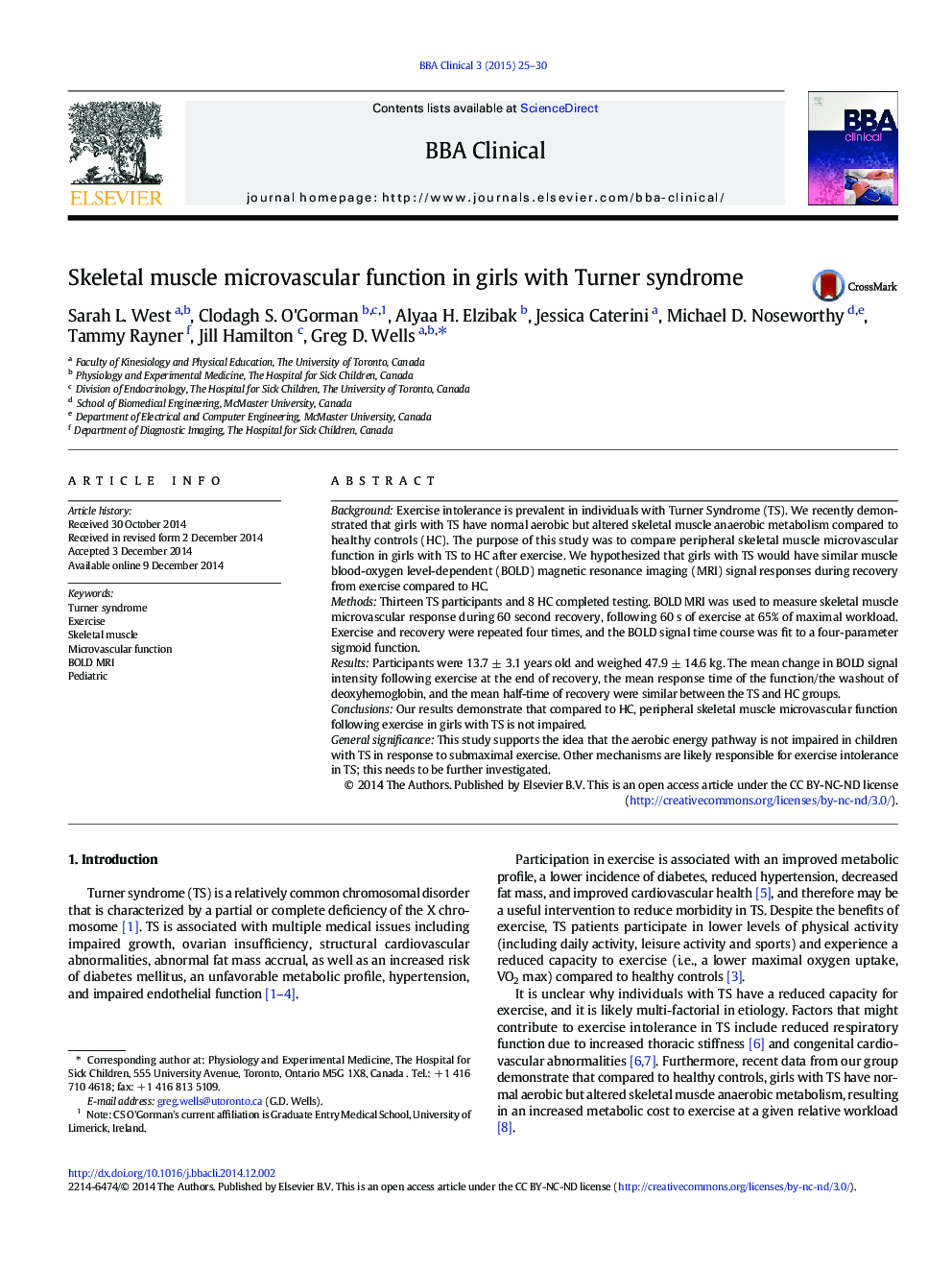| کد مقاله | کد نشریه | سال انتشار | مقاله انگلیسی | نسخه تمام متن |
|---|---|---|---|---|
| 2773119 | 1567899 | 2015 | 6 صفحه PDF | دانلود رایگان |
• Muscle microvascular function was examined in girls with TS vs. controls.
• We used non-invasive BOLD MRI to assess microvascular responses.
• Muscle microvascular function following exercise in girls with TS was not impaired.
• The aerobic pathway is not impaired in response to exercise in our girls with TS.
BackgroundExercise intolerance is prevalent in individuals with Turner Syndrome (TS). We recently demonstrated that girls with TS have normal aerobic but altered skeletal muscle anaerobic metabolism compared to healthy controls (HC). The purpose of this study was to compare peripheral skeletal muscle microvascular function in girls with TS to HC after exercise. We hypothesized that girls with TS would have similar muscle blood-oxygen level-dependent (BOLD) magnetic resonance imaging (MRI) signal responses during recovery from exercise compared to HC.MethodsThirteen TS participants and 8 HC completed testing. BOLD MRI was used to measure skeletal muscle microvascular response during 60 second recovery, following 60 s of exercise at 65% of maximal workload. Exercise and recovery were repeated four times, and the BOLD signal time course was fit to a four-parameter sigmoid function.ResultsParticipants were 13.7 ± 3.1 years old and weighed 47.9 ± 14.6 kg. The mean change in BOLD signal intensity following exercise at the end of recovery, the mean response time of the function/the washout of deoxyhemoglobin, and the mean half-time of recovery were similar between the TS and HC groups.ConclusionsOur results demonstrate that compared to HC, peripheral skeletal muscle microvascular function following exercise in girls with TS is not impaired.General significanceThis study supports the idea that the aerobic energy pathway is not impaired in children with TS in response to submaximal exercise. Other mechanisms are likely responsible for exercise intolerance in TS; this needs to be further investigated.
Journal: BBA Clinical - Volume 3, June 2015, Pages 25–30
